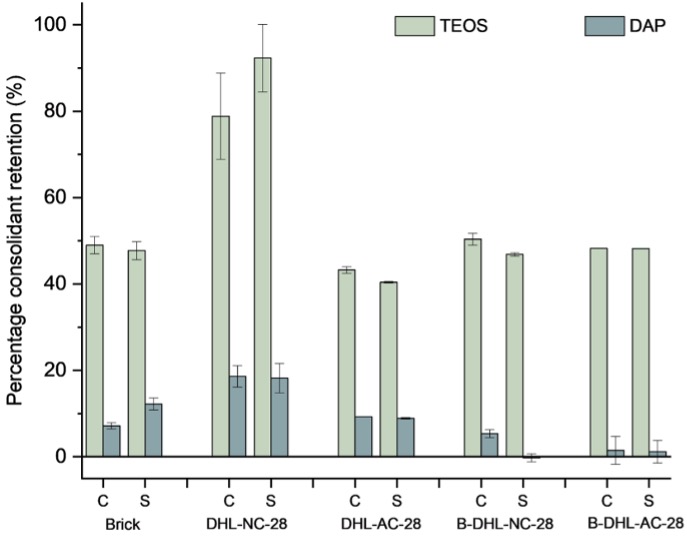Consolidants in Salt-Weathered Masonry: Retention and Efficiency of DAP and TEOS
DOI:
https://doi.org/10.21809/rilemtechlett.2024.206Keywords:
Consolidation, Salt weathering, Diammonium hydrogen phosphate, Tetraethoxysilane, MasonryAbstract
Consolidants are widely used to improve grain cohesion in monuments and sculptures under degradation. The porosity and pore size distribution of the substrate and the consolidant properties play a pivotal role in the efficient absorption and retention of the compounds. The substrate mineralogy is critical in product formation and essential for the substrates' long-term durability. In this study, the masonry components – brick, mortar and brick-mortar sandwiches – are consolidated by brushing with two different consolidants – phosphate-based DAP and silane-based TEOS. The accelerated salt weathering of specimens in chloride and sulphate solution simulated their deteriorated stage closer to reality before consolidation. The short-term and long-term effects of carbonation condition, pore size distribution, mineralogy and hygric resistance on the consolidation are investigated through microstructural analysis. The results highlight the importance of pore size distribution and porosity in the initial consolidant uptake and the significance of the compositional similarity between the substrate and the consolidant in the long-term retention amount of the consolidants. The observations indicate that TEOS consolidation's higher efficiency is at the expense of pore occlusion, which could adversely affect the systems' durability under salt weathering and freeze-thaw.

Downloads
Published
How to Cite
Issue
Section
License
Copyright (c) 2025 V A Anupama, Enrico Sassoni, Manu Santhanam

This work is licensed under a Creative Commons Attribution 4.0 International License.
Authors retain copyright of the articles published in RILEM Technical Letters and grant the journal the right of first publication with open access. The work is simultaneously licensed under Creative Commons Attribution 4.0 International License (CC BY 4.0) that allows others to share and adapt the work under the following terms: 1) a proper attribution is given in a form of bibliographic record with the DOI link directing to RILEM Technical Letters; 2) a link to the license is provided; 3) the changes (if any) are indicated.









